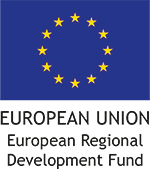What is marine litter?
Marine litter is defined as ”any persistent, manufactured or processed solid material discarded, disposed of or abandoned in the marine and coastal environment”*. Marine litter is nowadays present in the oceans all over the world from the sea surface to the deep ocean floors. The largest proportion of all marine litter consists of plastics, but includes also for example glass, metal and paper. Plastics are considered particularly harmful to the environment due to their persistence and tendency to fragment down into smaller pieces called microplastics, which are less than 5 mm in diameter.
*definition by UNEP 2009
Where does it come from?
The sources of marine litter can be divided into land-based and sea-based sources depending on where the debris enters the sea. Majority of marine litter originates on land and includes litter from construction, packaging, industry, coastal tourism, unprotected landfills and intentional or non-intentional littering by the public. From the land litter is transported to the ocean by winds, rivers, storm waters and sewage. Sea-based sources include shipping, fishing and aquaculture. Since the actual quantities and pathways of marine litter into the sea are still largely unknown, the BLASTIC project aims at demonstrating how plastic waste in urban areas ends up into the Baltic Sea. Once we know where, why and how it enters the sea, we can learn to manage it.
Where is it?
Plastic litter is ubiquitous in the marine environment and its abundance varies greatly depending on the location. Many plastics float on the sea surface and may drift via winds or sea currents and accumulate far from the original source. Densities of floating plastics are so far reported being highest in the oceanic gyres and enclosed seas. High abundances of plastic litter have also been observed in regions with high population density. Over time plastics can drift to the beaches or sink in the water column and end up to the seafloor. Some of the smallest plastic fragments are also present in biota, since various animals have been observed to ingest plastic particles.
Why is there so much plastic in the oceans?
The continuously increasing global production of plastics has led to an accumulation of enormous amounts of plastic litter in the oceans. Plastic is commonly used as packaging material, which is often disposed after single use. If not recycled, plastic can end up to the environment from where it can get transported to the ocean. As a synthetic material, plastic is not easily degraded and tend to accumulate in the oceans. Since their complete degradation may last even hundreds of years, they are really persistent in the marine environment.
Which animals eat plastic?
At least 331 species around the world have been observed to eat plastic in the wild. Ingestion of different sized plastic litter has been detected in marine mammals, seabirds, reptiles, fish, shellfish and other marine invertebrates. The smaller the plastic particle is, the easier it can be ingested by large variety of organisms. Plastics can be actively taken up if the particles resemble the natural prey of the animal, or they can be unintentionally ingested with their natural food. Inside the animal plastics may cause abrasions or blockages, which can lead to death.
Why should I care?
Marine litter causes a variety of ecological, social and economic problems. Perhaps one of the biggest concerns is the hazardous substances related to plastics. Some of the harmful additives used in plastic production may leach out from the plastic matrix when weathering in natural conditions. In addition, plastics are also known to adsorb hazardous substances from the environment. The knowledge on the impacts of plastics and associated hazardous substances in the biota and in the food web are still limited, but there is a concern of hazardous substances affecting wildlife and finally ending up to our plates through seafood.
What is known about plastic litter in the Baltic Sea?
A majority of the knowledge related to marine litter comes from around the world, but studies have also been conducted in the Baltic Sea. It is known that on average 62 % of beached litter in Sweden, Finland, Estonia and Latvia consists of plastics, and on the seafloor the proportion of plastic has been observed being approximately 36 %. The impacts of this litter include for example ingestion of plastic particles by fish and their entanglement to discharged fishing gear. In addition to larger plastic litter, microplastics are found from the beaches, surface waters, water column and seafloor in the Baltic Sea area, and in a laboratory they have been observed to get ingested by various animals including for example bivalves and zooplankton.
How is marine litter managed?
To combat the problem with marine litter, a wide range of local, regional, national and international measures has to be taken. There are already variety of conventions, agreements, regulations, strategies, action plans, programs and guidelines associated in monitoring, preventing, reducing and managing marine litter. Preventing measures are particularly important and include source reduction, waste reuse and recycling. However, insufficient data of marine litter, deficiencies in the legislation and a lack of enforcement of regulations hinders the efficiency of management. Since marine litter does not know any boundaries, international co-operation is definitely needed.
What can I do?
Reducing plastic litter in the marine environment is our common mission and we can all make small choices to prevent littering. The easiest way is to avoid unnecessary use of plastic for example in packaging, clothing and everyday cosmetics. It is also important to reuse and recycle plastic items and prevent their entry to the environment. Many organisations are raising awareness through beach clean-up campaigns, which are also a fun way to make a stand for the environment. Why not to taker closer look to the organisations behind BLASTIC project?

